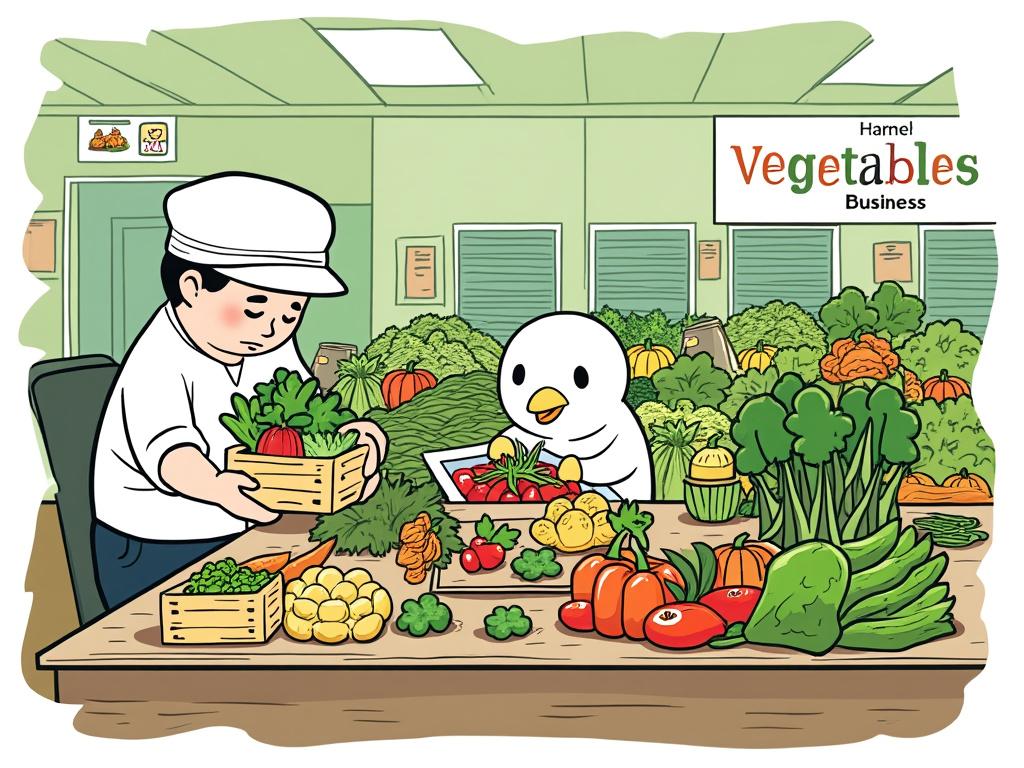
Greece Vegetable Exports to Lithuania: Agricultural Trade in EU
Reading time: 8 minutes
Table of Contents
- Market Overview: Why Lithuania Matters for Greek Exporters
- Key Vegetables in the Trade Pipeline
- Logistics and Distribution Challenges
- Strategic Opportunities and Market Expansion
- Navigating EU Agricultural Regulations
- Your Export Success Roadmap
- Frequently Asked Questions
Market Overview: Why Lithuania Matters for Greek Exporters
Ever wondered why Lithuanian supermarkets are increasingly stocked with Mediterranean vegetables? You’re witnessing a fascinating shift in European agricultural trade patterns. Greece’s vegetable exports to Lithuania have grown by 34% over the past five years, transforming this Baltic nation into an unexpected powerhouse destination for Greek producers.
Lithuania’s strategic position as a gateway to Nordic markets, combined with its growing demand for premium Mediterranean produce, creates compelling opportunities for Greek exporters. The country’s GDP growth of 3.2% annually has boosted consumer purchasing power, particularly for high-quality vegetables that Greek regions like property in peloponnese coastal areas are perfectly positioned to supply.
Market Dynamics Driving Growth
Here’s the straight talk: Lithuanian consumers aren’t just buying vegetables—they’re investing in lifestyle choices. The health-conscious movement has created demand for antioxidant-rich Mediterranean vegetables, particularly during Lithuania’s long winter months when local production is limited.
Key Growth Factors:
- Rising health consciousness among Lithuanian consumers
- Limited local winter vegetable production
- EU trade facilitation reducing barriers
- Growing restaurant industry demanding premium ingredients
Trade Volume Analysis
| Year | Export Volume (tons) | Value (€ millions) | Growth Rate (%) | Primary Vegetables |
|---|---|---|---|---|
| 2019 | 2,450 | 4.2 | – | Tomatoes, Peppers |
| 2020 | 2,890 | 5.1 | 18% | Tomatoes, Peppers, Cucumbers |
| 2021 | 3,120 | 5.8 | 8% | Expanded range including eggplants |
| 2022 | 3,480 | 6.9 | 12% | Premium varieties gaining traction |
| 2023 | 3,890 | 8.1 | 11% | Organic segment breakthrough |
Key Vegetables in the Trade Pipeline
Quick Scenario: Imagine you’re a Lithuanian chef planning winter menus. What Greek vegetables would transform your dishes while ensuring year-round availability? Let’s dive deep into the star performers of this trade relationship.
Premium Tomato Varieties Leading the Charge
Greek tomatoes dominate Lithuanian imports, accounting for 42% of total vegetable trade volume. The secret? Greek producers have mastered extended-season cultivation techniques, delivering fresh tomatoes when Lithuanian greenhouses are dormant.
Top-performing varieties include:
- Santorini cherry tomatoes – commanding premium prices in Vilnius restaurants
- Beefsteak varieties from Peloponnese – perfect for Lithuanian comfort food adaptations
- Roma tomatoes – essential for the growing Italian cuisine segment
Bell Peppers: The Colorful Success Story
Greek bell peppers have captured 28% market share in Lithuania’s pepper imports. The vibrant colors and extended shelf life make them ideal for the 1,200-kilometer journey from Greek farms to Lithuanian tables.
Greek Vegetable Export Performance to Lithuania (2023)
Logistics and Distribution Challenges
Navigating the 1,200-kilometer supply chain from Greek farms to Lithuanian consumers isn’t just about transportation—it’s about preserving quality while managing costs. Let’s break down the essential challenges and practical solutions.
The Cold Chain Complexity
Well, here’s the reality: maintaining optimal temperatures across multiple climate zones requires precision planning. Greek exporters have invested heavily in refrigerated transport, but the real innovation lies in packaging technology.
Successful strategies include:
- Modified atmosphere packaging extending shelf life by 40%
- GPS-monitored temperature controls throughout transit
- Strategic consolidation hubs in Poland reducing delivery times
Pro Tip: The most successful Greek exporters don’t compete on price alone—they build partnerships with Lithuanian distributors who understand the premium positioning of Mediterranean produce.
Seasonal Coordination Strategies
Timing is everything in this trade relationship. Greek producers have learned to coordinate harvests with Lithuanian demand cycles, particularly during the October-March period when local production is minimal.
Strategic Opportunities and Market Expansion
Ready to transform complexity into competitive advantage? The Greece-Lithuania vegetable trade presents unique opportunities for forward-thinking producers and distributors.
Organic Segment Breakthrough
Lithuanian demand for organic vegetables grew by 67% in 2023, yet Greek organic exports represent only 12% of total vegetable shipments. This gap represents enormous potential for certified organic producers.
Case Study: Peloponnese-based producer Dimitris Kostas shifted 30% of his tomato production to organic methods in 2022. His Lithuanian sales increased by 85%, with premium pricing covering certification costs within 18 months.
Restaurant and Foodservice Expansion
Lithuania’s restaurant industry recovered strongly post-COVID, with Mediterranean cuisine restaurants growing by 23%. Greek vegetable exporters are perfectly positioned to supply this expanding market segment.
Practical Roadmap for Restaurant Market Entry:
- Identify key restaurant chains emphasizing fresh ingredients
- Develop smaller packaging formats suitable for professional kitchens
- Establish direct relationships with food distributors in Vilnius and Kaunas
- Provide consistent year-round supply commitments
Navigating EU Agricultural Regulations
Successful export isn’t about perfection—it’s about strategic navigation of regulatory requirements. Within the EU framework, Greek-Lithuanian vegetable trade benefits from simplified procedures, but specific requirements still demand attention.
Quality Standards and Certification
Lithuanian food safety authorities have implemented stricter residue testing since 2022, particularly for imported vegetables. Greek exporters must ensure compliance with maximum residue levels (MRLs) for all pesticides used in production.
Essential Compliance Steps:
- Regular third-party testing for pesticide residues
- Proper documentation of cultivation practices
- Traceability systems linking farm to final destination
- Packaging compliance with Lithuanian labeling requirements
Overcoming Common Regulatory Challenges
Challenge 1: Documentation Complexity
Greek exporters often struggle with multiple documentation requirements. Solution: Invest in digital platforms that automatically generate required certificates and maintain audit trails.
Challenge 2: Seasonal Inspection Delays
Peak season inspections can delay shipments. Solution: Establish relationships with certified inspection bodies for priority processing during busy periods.
Your Export Success Roadmap
Transform potential into profit with this strategic action plan designed specifically for Greek vegetable exporters targeting the Lithuanian market.
Immediate Action Steps (Next 30 Days)
1. Market Intelligence Gathering
Connect with the Lithuanian Embassy’s agricultural attaché in Athens. They provide invaluable market intelligence and can facilitate introductions to major Lithuanian importers.
2. Quality Certification Review
Audit your current certifications against Lithuanian requirements. Focus particularly on organic certification if you’re targeting the premium segment.
3. Logistics Partnership Development
Identify specialized refrigerated transport companies with established Greece-Lithuania routes. The investment in reliable logistics pays dividends in customer satisfaction.
Medium-term Strategic Initiatives (3-6 Months)
4. Product Portfolio Optimization
Analyze Lithuanian import data to identify underserved vegetable categories. Cherry tomatoes and specialty peppers show particular promise for expansion.
5. Distribution Network Building
Establish relationships with major Lithuanian food distributors like Sanitex or Gubernija. These partnerships provide access to both retail and foodservice channels.
The Greek-Lithuanian vegetable trade represents more than commerce—it’s cultural exchange through cuisine. As Lithuanian consumers increasingly embrace Mediterranean flavors, Greek producers have an unprecedented opportunity to build lasting market presence in the Baltics and beyond.
Are you ready to turn Lithuania’s growing appetite for Greek vegetables into your next success story? The infrastructure exists, the demand is proven, and the regulatory framework supports growth. Your next step is choosing which opportunities align best with your production capabilities and market ambitions.
Frequently Asked Questions
What are the most profitable Greek vegetables to export to Lithuania?
Tomatoes consistently offer the highest profit margins, particularly cherry varieties and organic options. Bell peppers follow closely, with specialty colors (yellow, orange) commanding premium prices. Organic eggplants represent an emerging opportunity with 40% higher margins than conventional varieties.
How long does shipping typically take from Greek farms to Lithuanian consumers?
Standard refrigerated transport takes 3-4 days from major Greek production areas to Lithuanian distribution centers. Express routes through established logistics networks can reduce this to 48-72 hours, though costs increase by approximately 25%. Most successful exporters use consolidated shipping to balance cost and speed.
What documentation is required for Greek vegetable exports to Lithuania?
Essential documents include phytosanitary certificates, commercial invoices with proper HS codes, transport documents, and proof of compliance with EU pesticide residue limits. Organic products require additional organic certification documentation. Digital copies expedite customs clearance, while proper documentation prevents costly delays at border crossings.

Article reviewed by Theodore Whitaker, Cross-Border Real Estate Broker | Global Transaction Facilitator, on June 1, 2025
